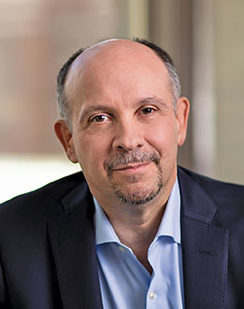The success of any college student is always a group project. No one crosses that stage to accept a degree or certificate unless there are people offstage — instructors who inspire, family members who care and cajole, friends who share and support. Role models are crucial, particularly for students who are unfamiliar with the college- going process or face other barriers to postsecondary success.
In other words, mentors matter. And these days, they matter more than ever. As the nation grapples with its growing need for talent — a need that can only practically be met by significantly increasing rates of college attainment — we need more and more engaged, caring adults on the front lines.
Systems can be tweaked, processes and policies improved, but without direct and sustained personal involvement, it’s hard for college dreams to become realities.
A high-achieving, low-income student has about the same statistical chance of going to college as does a low-achieving, high-income student. Almost 25 percent of low-income students who score in the top quartile of standardized tests never go to college. And of those who do, many never earn a degree.
It’s no secret that the main institutional resource for pre-college advising, the high school counseling office, is struggling. And no wonder. The ratio of students to counselors at the typical high school is more than 450:1. That number isn’t an issue for some students. But for first-generation and other at-risk students — those who lack the resources or the built-in “college knowledge” of their better-situated peers — the lack of help can quickly douse those college dreams.
Fortunately, in communities all over the nation, volunteer mentors are filling the guidance gap and making a difference. According to a report released in January by MENTOR: The National Mentoring Partnership, at-risk young adults who had a mentor are more likely to aspire to be college graduates than those who did not have a mentor (76 percent versus 56 percent). They’re also more likely than their non-mentored peers to actually be enrolled in college (45 percent versus 29 percent).
Models vary, but the underlying premise of mentoring programs is the same: Caring, knowledgeable adult mentors help at-risk kids over the hurdles they encounter during the college-going process. When kids do stumble, mentors help them up. In the process, mentors are themselves lifted up — not just emotionally, but also practically and professionally, by sharpening their leadership skills and improving time management and customer relationship management.
This issue of Lumina Foundation Focus explores the benefits of mentoring by shining the spotlight on three different programs. All are making a measurable difference for the students they serve — and for the mentors who provide that service. In this Focus, you’ll read about:
- iMentor, a one-on-one mentoring model that has served more than 12,000 at-risk students since it got its start in New York City in 1999. Using a curriculum developed especially for the program, iMentor volunteers nurture their charges’ college aspirations and help them build the non-cognitive skills that lead to college success.
- The College Advising Corps (CAC), a national program that got its start in 2005 at the University of Virginia and has since grown to touch the lives of nearly 130,000 students at 425 high schools in 14 states. CAC uses a “near-peer” approach, recruiting recent college graduates to serve as advisers in high schools with high populations of underserved students.
- College Mentoring for Access and Persistence (College MAP), which was developed in 2009 as a corporate responsibility program of Ernst & Young (EY), and has since grown to serve nearly 900 students in 20 U.S. cities. The idea here is to pair at-risk students — often the first in their families to attend college — with experienced and accomplished professionals.
Of course, the people and programs featured in this issue of Focus represent just a fraction of the mentoring activity now underway all over the nation. However it’s done — whether in organized programs such as these or in more informal, individualized efforts — this work is vital and needs to be expanded.
The benefits are huge. And as any mentor will attest, they extend in both directions.

Jamie P. Merisotis
President and CEO

